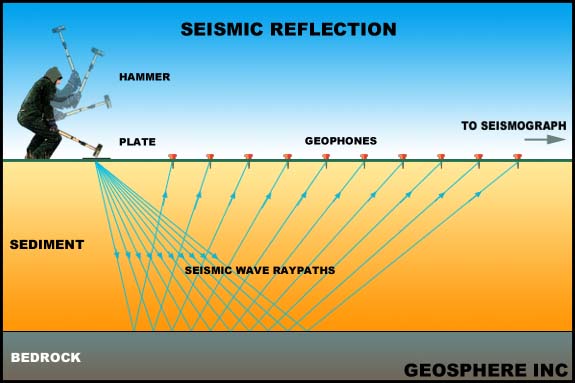


In practice, the speed of sound in the earth varies enormously. Dry, unconsolidated sand might carry sound waves at 800 feet per second (ft/s) or less. At the other extreme, unfractured granite might have a velocity in excess of 20,000 ft/s. The more layers between the surface and the layer of interest, the more complicated the velocity picture. Various methods are used to estimate subsurface velocities including refraction analysis, borehole geophysical measurements, estimates from known lithologic properties, and analysis of reflection times at increasing offsets. Generally, a combination of velocity estimation methods will give the best results.
![]()
email:
consultants@geosphereinc.com
124 north auburn road auburn, mi 48611 tel: (989) 662-6149
fax: (989) 662-7701
copyright ©1990-2007 geosphere inc

